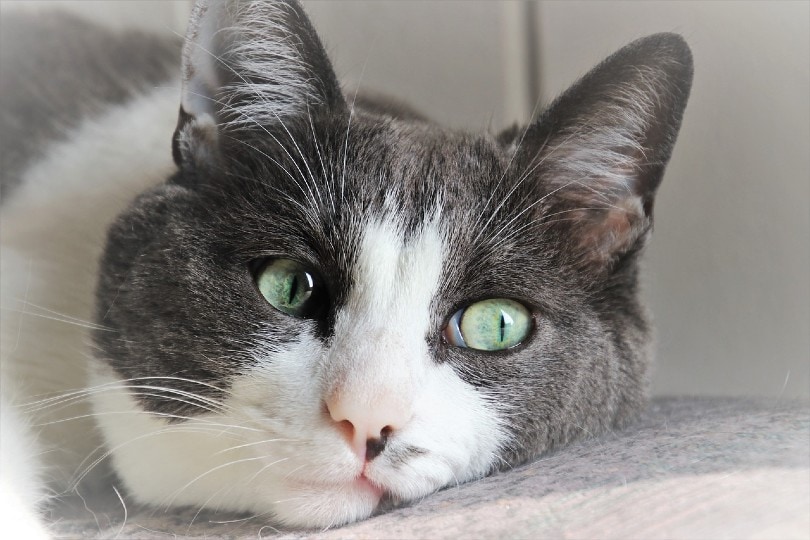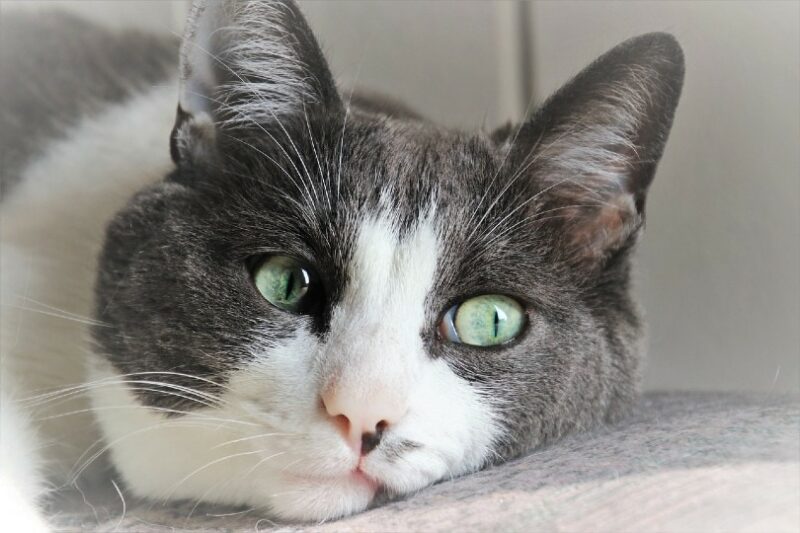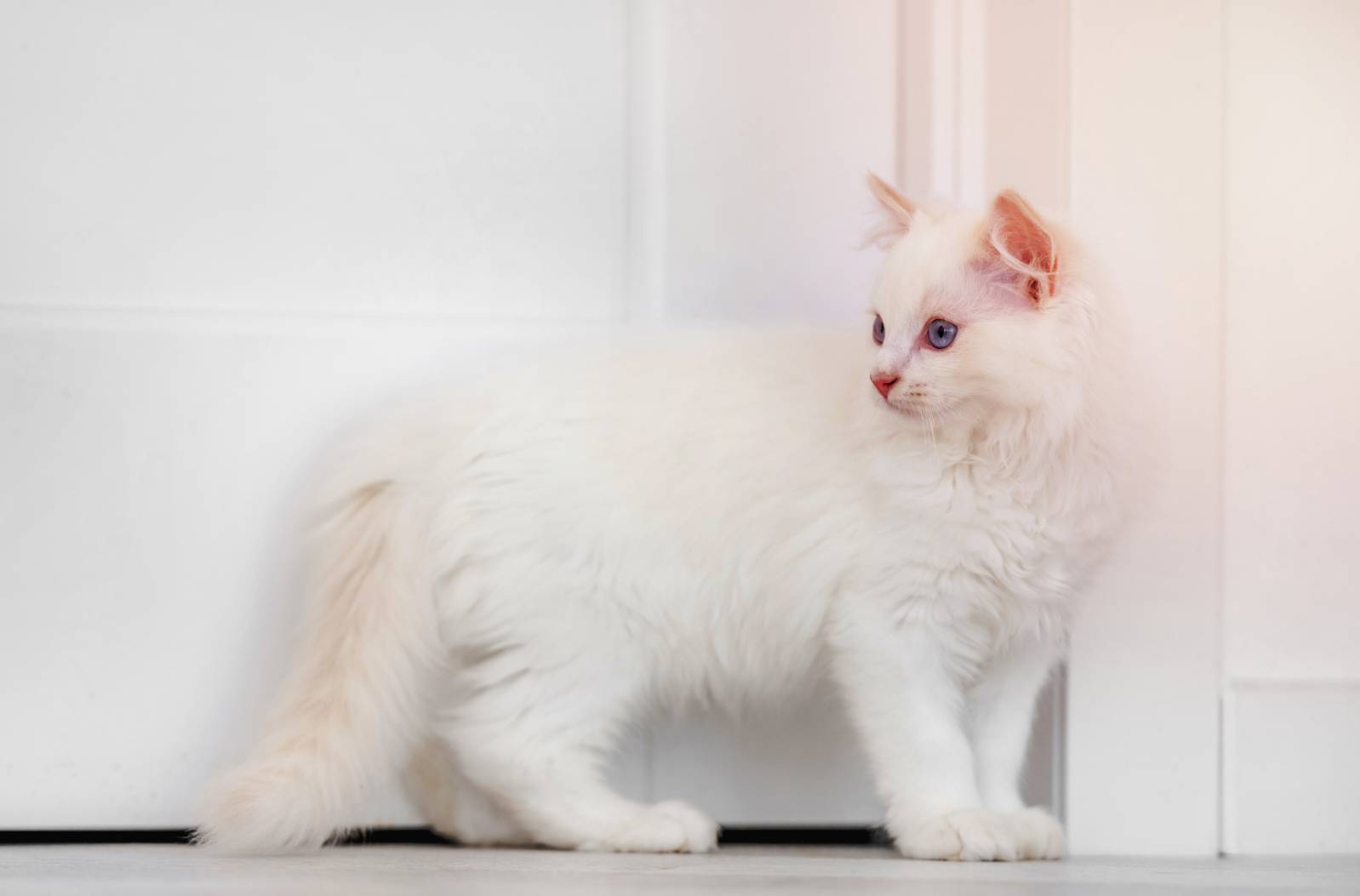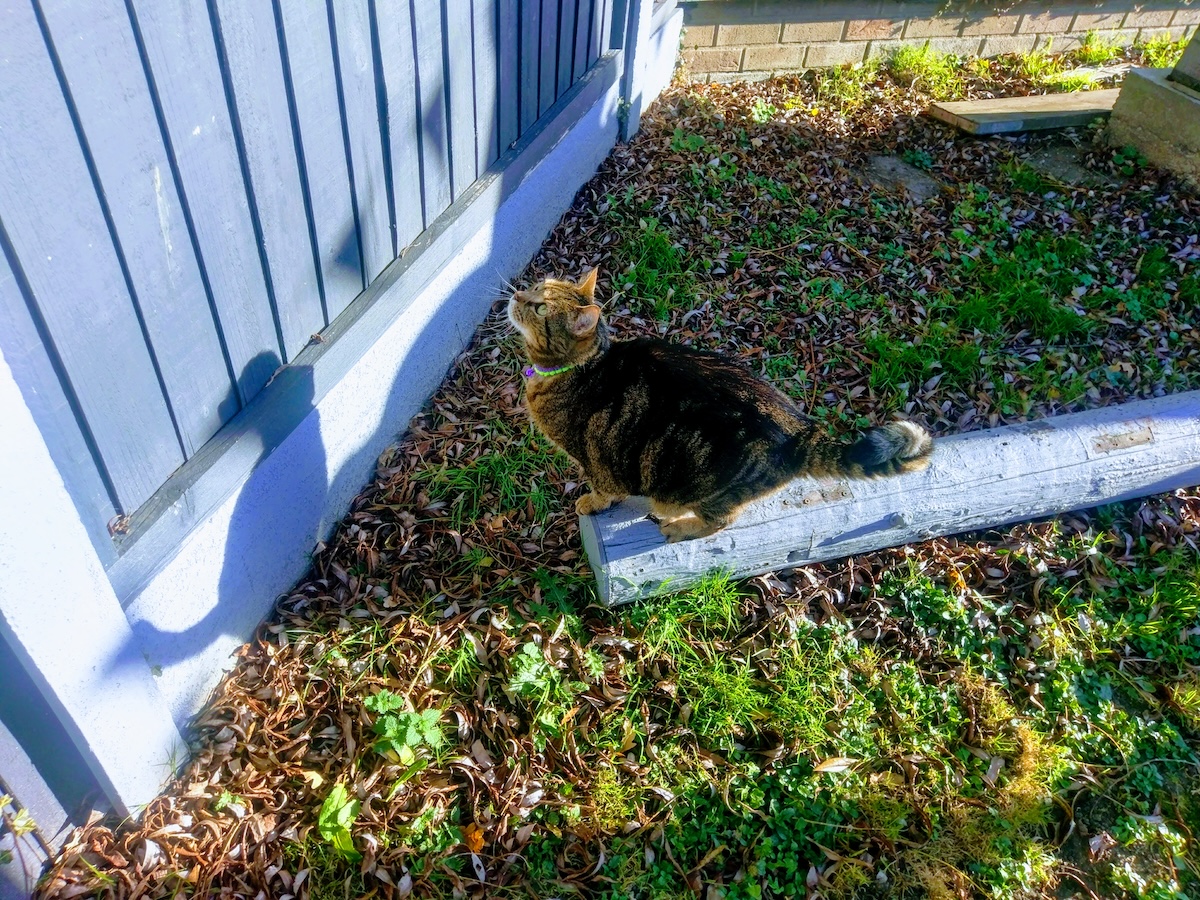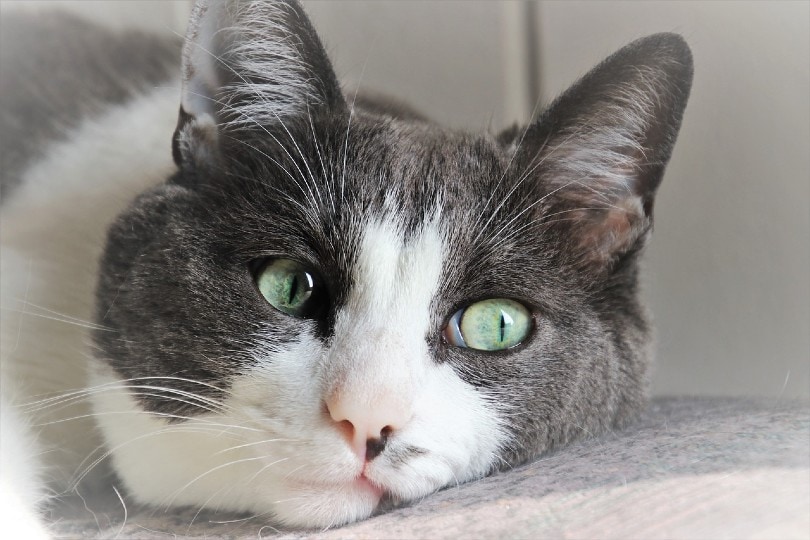
Rather than wrangling your cat to shove a pill down their throat every time they are on the fritz, you could persuade them with a delicious treat. But if you start to look for calming supplements on the market, things can get a little bit fuzzy. For your convenience, we have rounded up six of the best cat calming supplements we could find.
A Quick Comparison of Our Favorites of 2024
| Image | Product | Details | ||
|---|---|---|---|---|
| Best Overall |
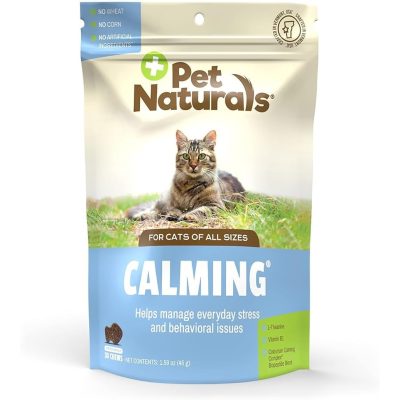
|
Pet Naturals of Vermont Calming |
|
CHECK PRICE |
| Best Value |
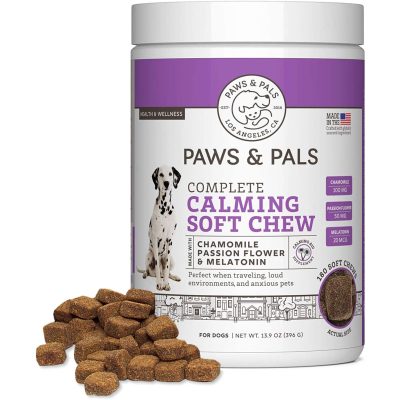
|
Paws & Pals Dog Calming Treats |
|
CHECK PRICE |
| Premium Choice |
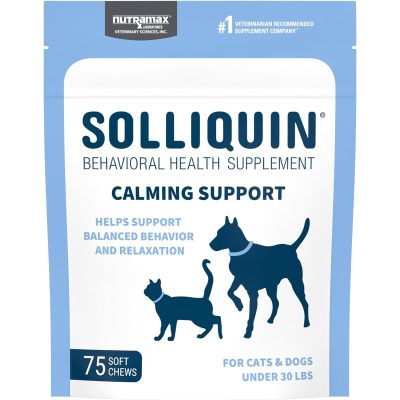
|
Solliquin Behavior Supplement |
|
CHECK PRICE |
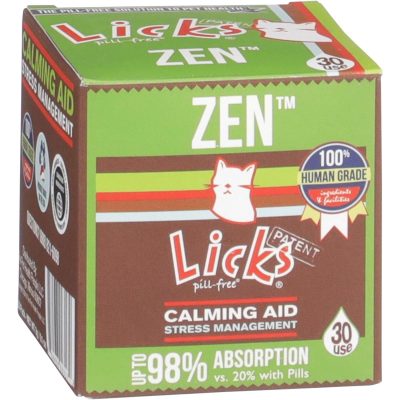
|
Licks Zen Cat Calming |
|
CHECK PRICE | |
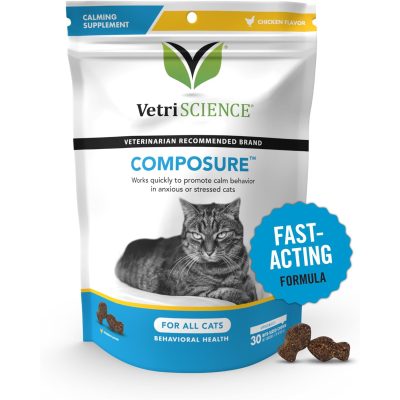
|
VetriScience Laboratories Composure |
|
CHECK PRICE |
The 6 Best Cat Calming Treats
1. Pet Naturals of Vermont Calming – Best Overall
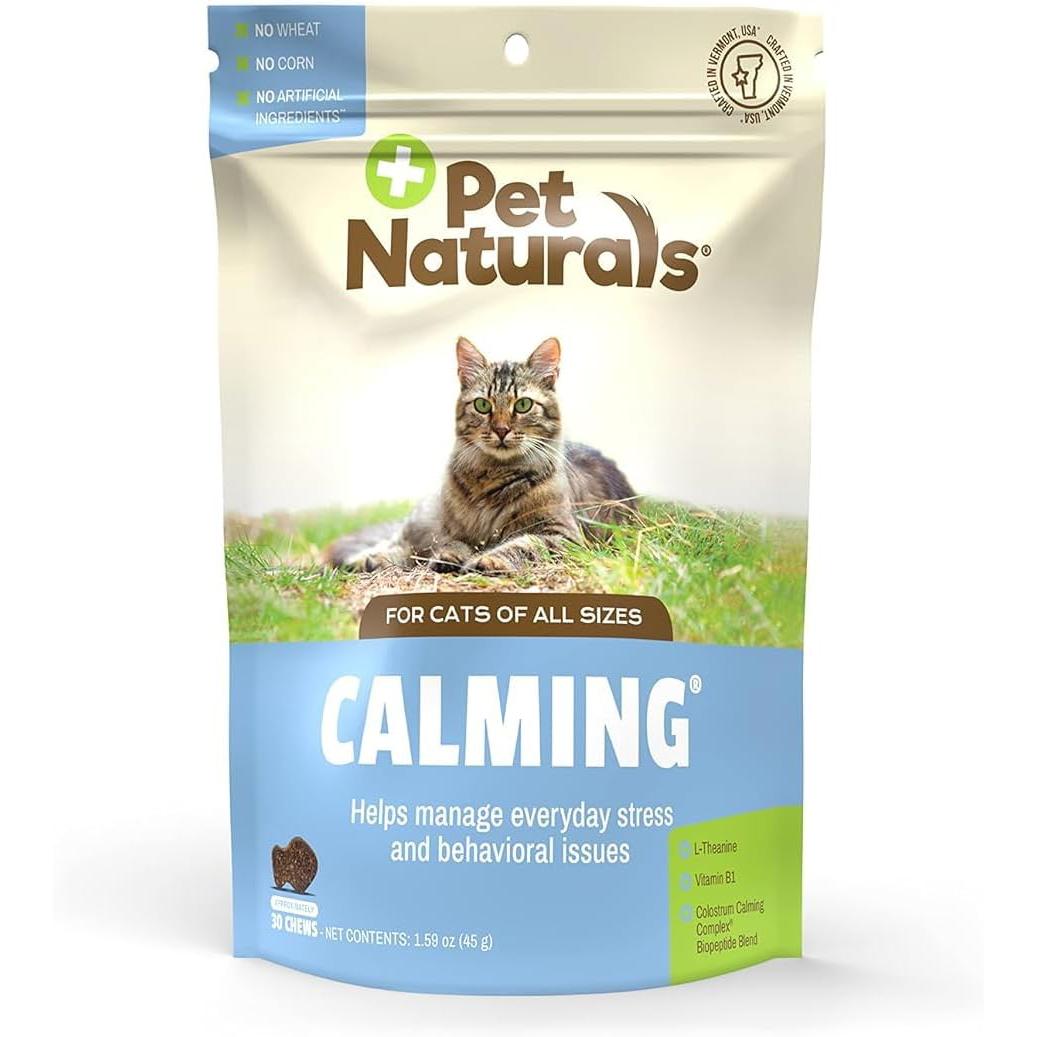
| Treat Type: | Soft Chews |
| Active Ingredient: | Thiamine, C3, L-Theanine |
We absolutely loved the Pet Naturals of Vermont Calming chews—that’s why they were our pick for the best overall cat calming treats. These chews are gentle enough for your cats to snack without an issue. There are 30 included, which contain no wheat, corn, or artificial ingredients.
These chews contain a unique proprietary blend including thiamine, colostrum calming complex, and L-theanine. These veterinary formulated chews are perfectly safe—you can dose up to three times for incredibly high-stress situations.
These chews are manufactured in the United States with both domestic and imported ingredients. If you have a pregnant or nursing cat, these chews are not recommended.
- Doses can be altered to fit the situation
- Safe ingredients
- Most cats enjoy the taste
- Some people said their cats wouldn’t eat them
2. Paws & Pals Dog Calming Treats – Best Value
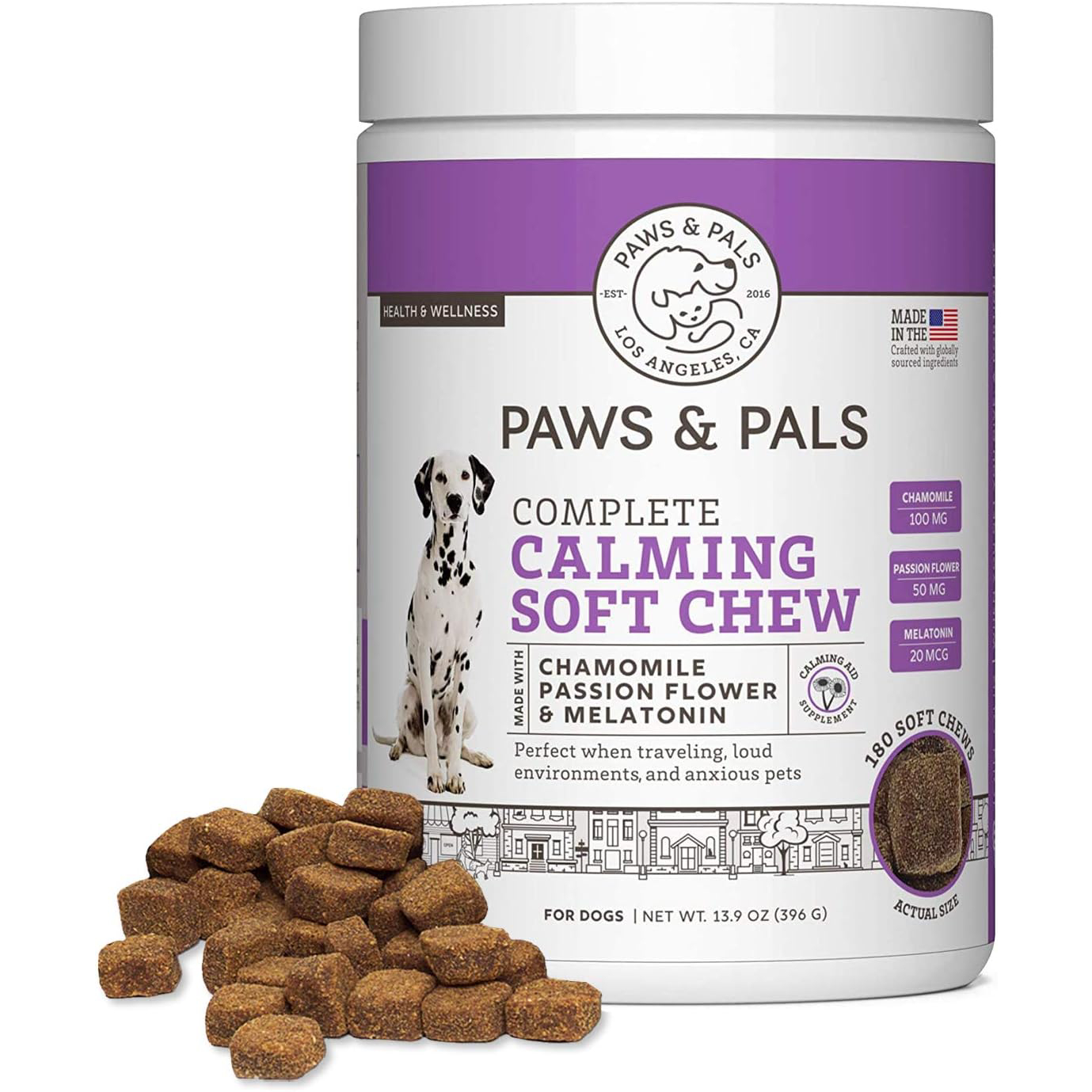
| Treat Type: | Soft Chews |
| Active Ingredient: | Thiamine, L-Tryptophan, Melatonin |
These Paws & Pals Dog Calming Treats can be used for dogs or cats, making it easy if you also have an anxious pooch. There are 180 soft chews and all, so one jar will last quite a while. Considering the amount, we think these are the best calming cat treats for the money. Though these are soft, they do dry out quickly when left out.
This recipe uses a powerful blend of chamomile, thiamine, passionflower, ginger, L-tryptophan, and melatonin. This is a potent combination that reduces extreme stress situations. There are clear instructions on the back of the label letting you know how many chews to give your cat based on its weight.
These particular chews take roughly 30 minutes to take effect. So, in the event of a stressful situation, always make sure to let it settle in their stomach. These chews contain all-natural ingredients that are trusted and made in the USA.
- For extreme stress
- Dog and cat-friendly
- All-natural
- Dries out quickly
3. Solliquin Behavior Supplement for Dogs & Cats – Premium Choice
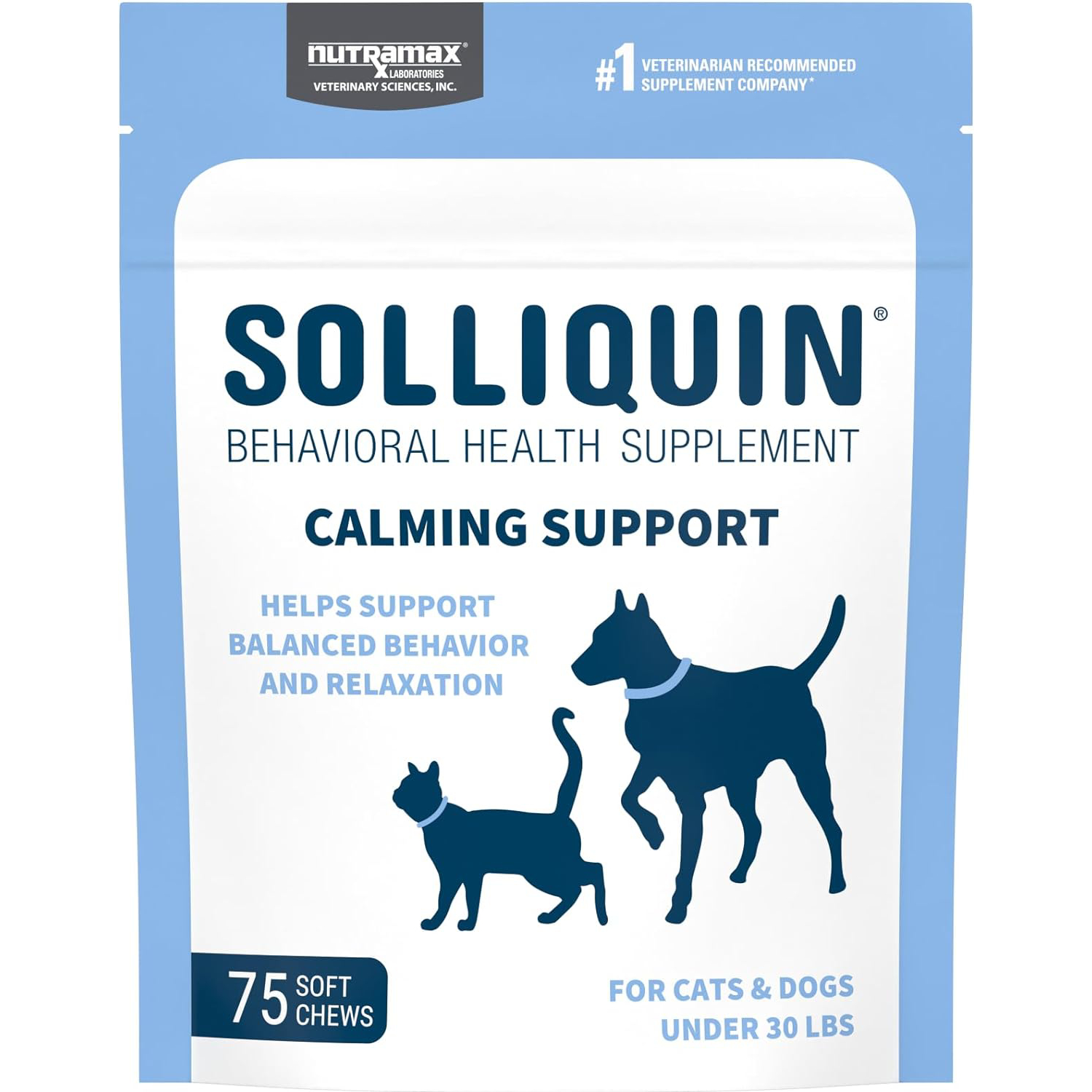
| Treat Type: | Soft Chews |
| Active Ingredient: | Magnolia officinalis, Phellodendron amurense, L-Theanine |
Solliquin Behavioral Health Supplements are a little on the pricey side, but the effects are well worth it. We really loved this product as it truly helps to balance behavior with gentle relaxation instead of changing your cat’s behavior entirely.
It’s a very gradual reduction of energy, so you can rest easy knowing that your cat is calm, but not overly so. This product does the job efficiently and comes with 75 soft chews in one bag.
This is designed to be a short-term solution for long-term results. It is recommended to use this product to reduce your cat’s stress and utilize behavior modification so you won’t have to give this to them daily. However, it is a really great product for occasional use and high-stress situations.
- Effective
- Short-term
- Gentle
- Pricey
4. Licks Zen Cat Calming
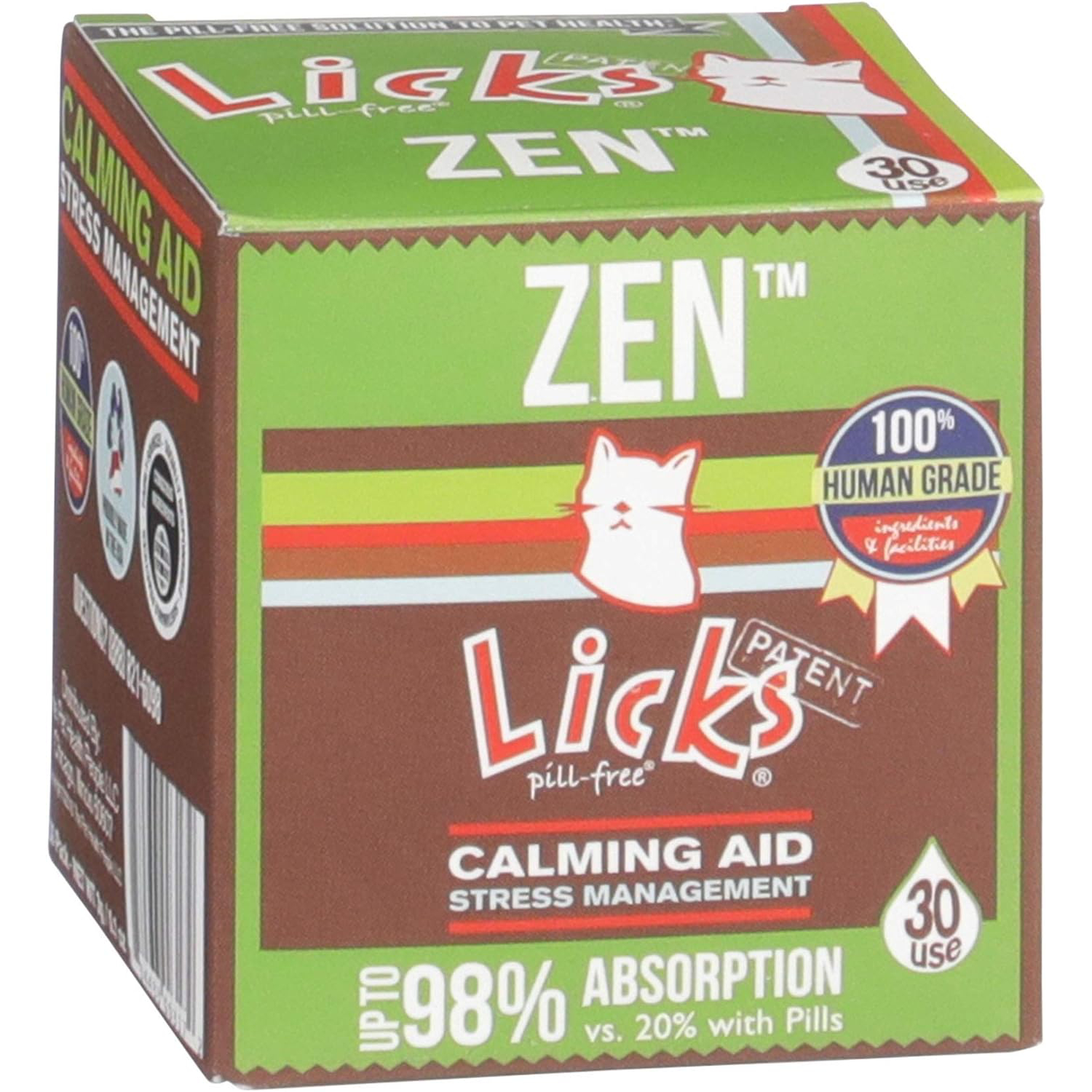
| Treat Type: | Licks |
| Active Ingredient: | Tryptophan, L-theanine, organic Eleuthero root, organic ashwagandha root |
When we tried the Licks Pill-Free Cat Calming Liquid, it was an excellent remedy for anxiety. This agent can be used for dogs or cats as long as you follow the dosage instruction on the side. Because it is liquid, it acts quickly, soaking into the system fast.
The general time of effectiveness is usually between 30 minutes to an hour. It naturally relaxes your cat without making them super drowsy, which is what we were looking for. We found it to be incredibly effective over chewables because of its fast-acting power.
This product uses only 100% human-grade ingredients, so you know that it is safe for your pets. Even though this is for anxiety, it also helps with aggression. So if you’re worried about your little one exhibiting aggression—possibly at the veterinarian, groomer, or kennel—this is a perfect product to curb some of that negative energy.
- Fast-acting
- Effective
- Non-drowsy
- Only 30 packets
5. VetriScience Laboratories Composure, Calming Formula for Cats
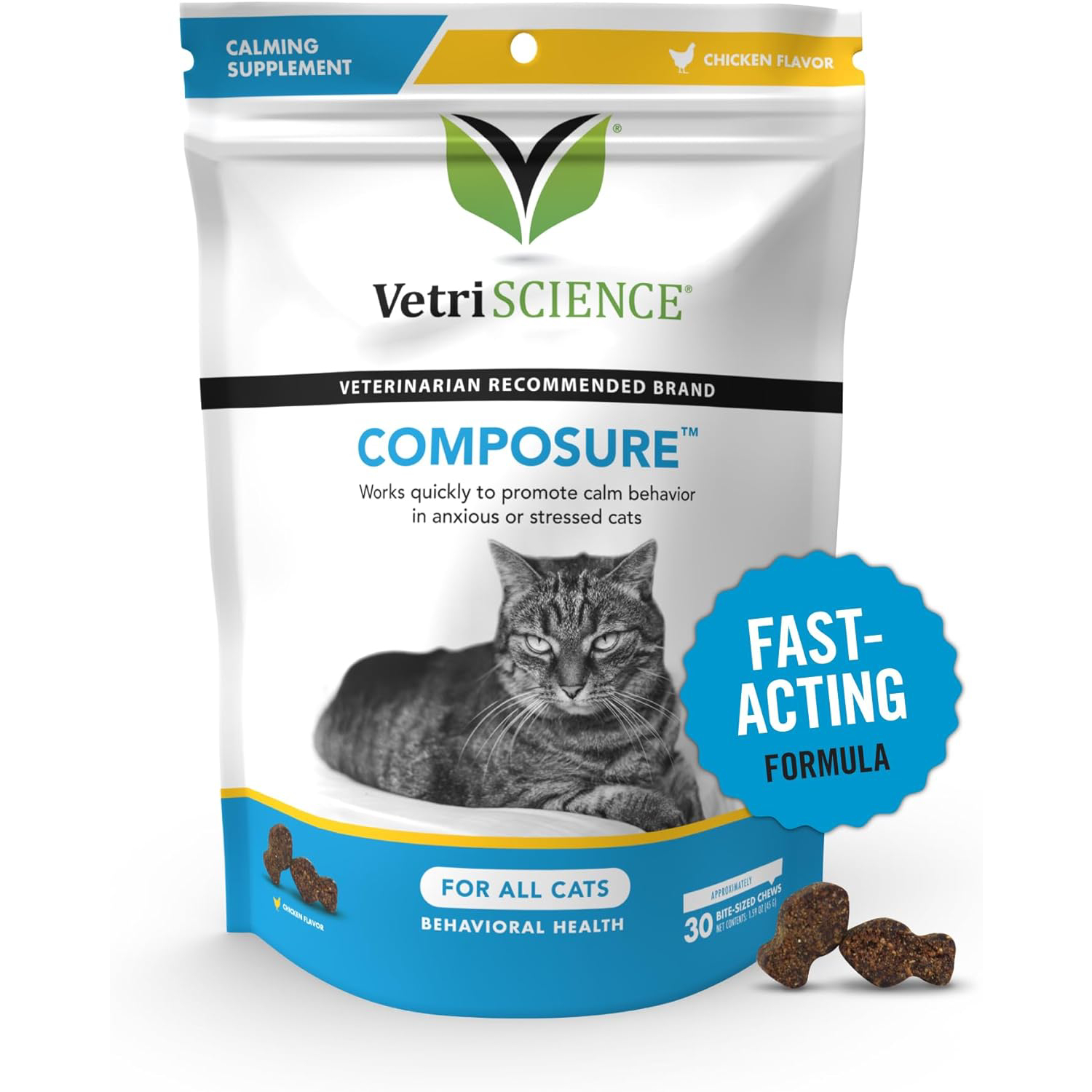
| Treat Type: | Soft Chews |
| Active Ingredient: | Thiamine, colostrum calming complex, L-theanine |
VetriScience Laboratories Composure is a very natural product that works well. It uses a combination of ingredients to ease nervousness but not alter your cat’s perception. This calming agent generally works 20 to 30 minutes after consumption.
It is safe enough to be given in up to triple doses without any negative impact. This product works gently to calm the mind and take the edge off of extreme stress.
These treats must be tasty because our cats gobbled them up. They have a chicken liver flavor with a decently strong scent to attract your feline friends. All in all, this product is safe and moderately effective, doing its job without being too powerful.
- Moderate effects
- Can triple dose
- Kicks in quickly
- Isn’t as potent
6. Vet Classics Stress Away Calming Aid
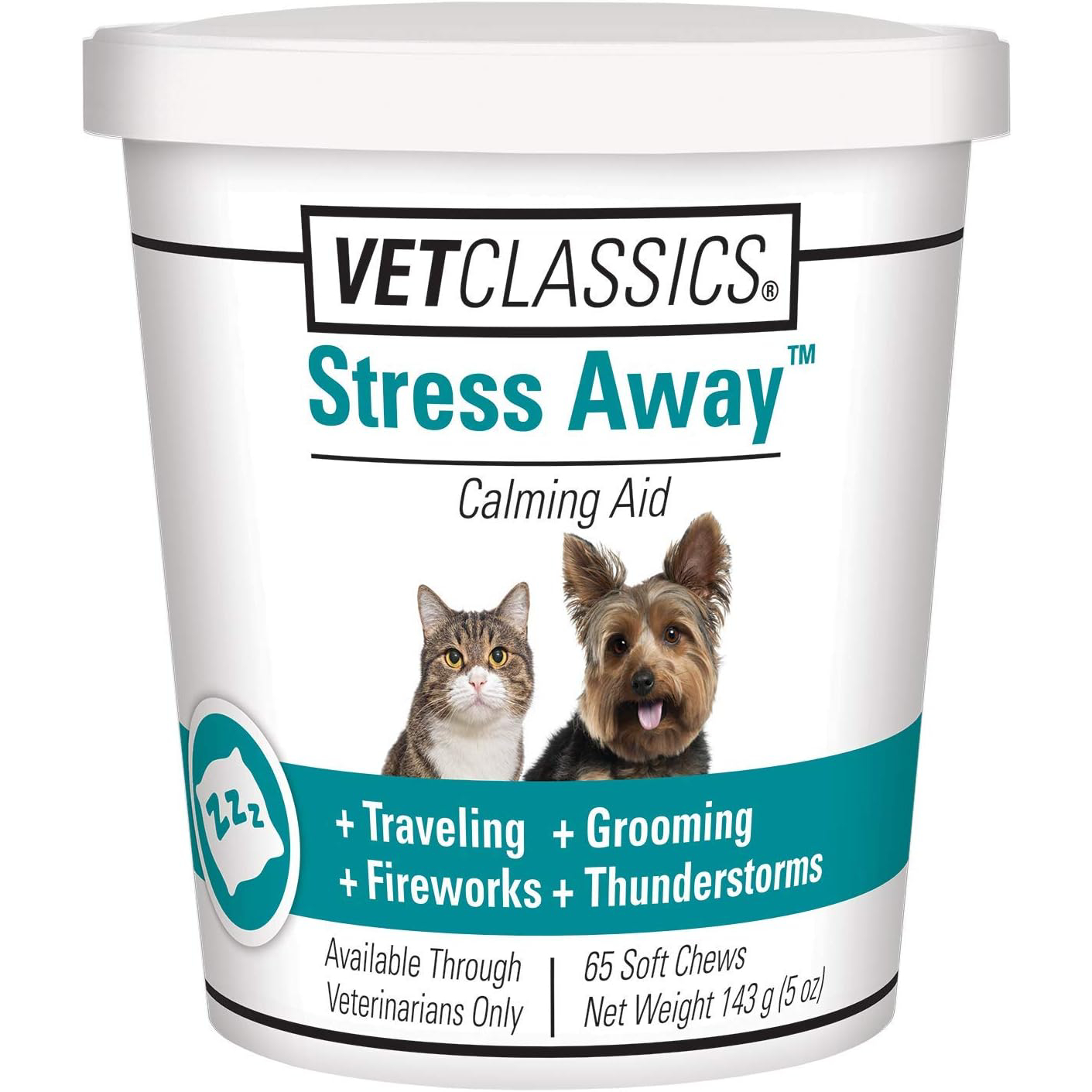
| Treat Type: | Soft Chews |
| Active Ingredient: | Thiamine, L-tryptophan, melatonin, ginger, chamomile |
We tried the VetClassics stress away calming aid, which is dog and cat safe. Using a blend of melatonin, ginger, and chamomile, these chews reduce stress with natural ingredients. You’ll get 65 soft chews per bottle.
Veterinarians recommend this product as a safe way to eliminate anxiety without using any harmful additives. It is formulated to ease tension, using a blend of useful ingredients that work together to lessen symptoms.
This product is gentle, relaxing your pet without overwhelming them. We noticed the cats did not seem completely drowsy, but there was a noticeable calm. This product is especially effective for senior cats.
- Great for seniors
- Gentle effects
- Not as effective as some
- Cannot double dose
 Buyer’s Guide: Selecting the Best Cat Calming Treats
Buyer’s Guide: Selecting the Best Cat Calming Treats
If you have an anxious kitty, easing their nerves is probably number one on your priority list. But when you’re shopping for supplements and products, what effective ingredients are you looking for? How do you know the product is going to do as it says? Well, let us tell you.
Calming Cat Treats: What Are They For?
Common cat treats can be used in all kinds of situations. Some cats are naturally more nervous than others, requiring something that isn’t prescription medication to take the edge off. Other cats only get nervous in certain settings.
Some circumstances in which your cat might need a little help with anxiety include:
- Vet visits
- Heavy storms
- Grooming trips
- Fireworks
- Company visits
- New animal introductions
Relaxing Ingredients
- L-theanine—This substance contains a naturally forming amino acid in the body. These amino acids have been shown scientifically to reduce anxiety without causing drowsiness.
- Thiamine— This B1 vitamin has been shown to decrease anxiety levels in the body, creating a stress-free experience for your feline pals
- Chamomile— Studies have proven that chamomile has reduced the effects of stress and relaxes the entire body. There’s a reason human beings have trusted chamomile tea for years. Not only does it help calm our systems, but it also helps effectively reduce the effects.
- L-tryptophan—This is an amino acid that is directly linked to the development of serotonin in the brain, which regulates mood and sleep.
- Melatonin—Melatonin is a natural chemical the pineal gland in the brain produces to sleep.
Soft Chews vs. Licks
The most common form of cat treat that calms is the soft chews. Most cats can enjoy these and will be attracted to the scent and flavor.
These products usually take 30 to 60 minutes to take effect, and the outcome might not be extremely drastic.
However, licks tend to absorb faster, creating quicker results. And they might work best for kittens or seniors with bad teeth.
Other Options
Cat treats are the only thing you can purchase for your kitty to help calm your nerves. They also make tinctures and other supplements that aid in relaxation.
You can buy things in liquid or capsule form, whatever works best for your feline friend. And if the anxiety is bad enough, your veterinarian might prescribe a medication to be taken daily or as needed.
Conclusion
We are confident that there is a supplement on this list that your cat will work best with. Personally, we liked the Pet Naturals of Vermont Calming Chews because they are safe, effective, and highly praised.
If you’re looking to save, you might enjoy the Paws & Pals Dog Calming Treats because they are affordable, powerful, and non-drowsy.
These products may work best for different cats, so it might be trial and error before you find the perfect calming cat treat.
Featured Image Credit: pasja1000, Pixabay
Contents
- A Quick Comparison of Our Favorites of 2024
- The 6 Best Cat Calming Treats
- 1. Pet Naturals of Vermont Calming – Best Overall
- 2. Paws & Pals Dog Calming Treats – Best Value
- 3. Solliquin Behavior Supplement for Dogs & Cats – Premium Choice
- 4. Licks Zen Cat Calming
- 5. VetriScience Laboratories Composure, Calming Formula for Cats
- 6. Vet Classics Stress Away Calming Aid
- Buyer’s Guide: Selecting the Best Cat Calming Treats
- Conclusion

